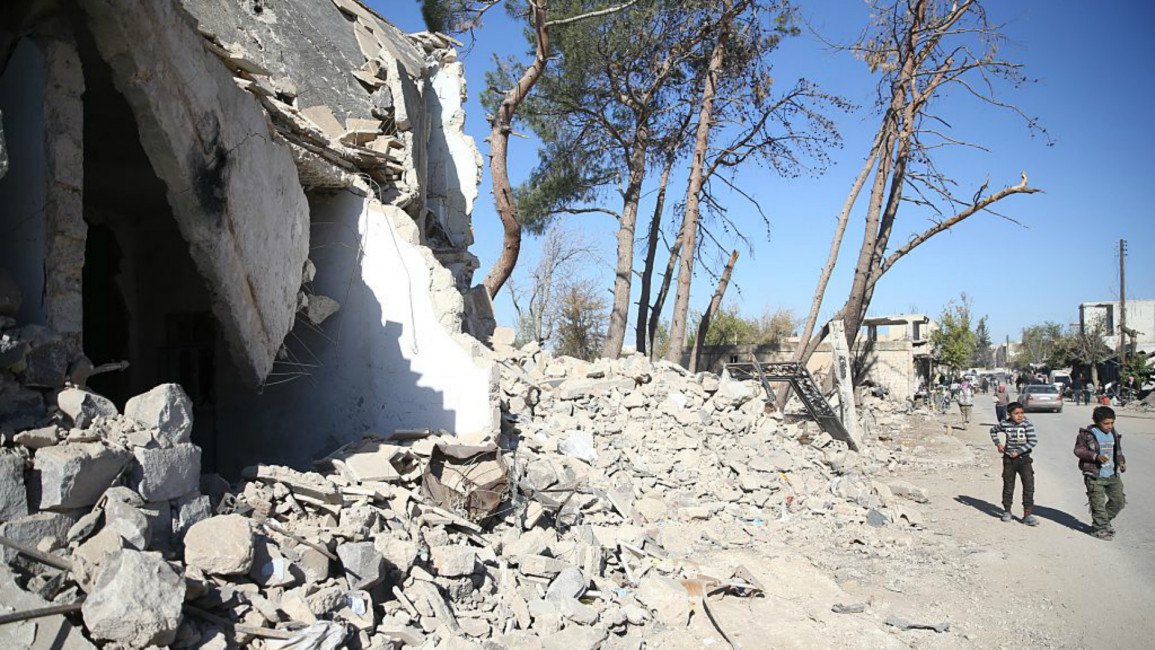
Will northern Syria look more like Gaza or Dubai?
Away from the focus of the media and the smoke and rubble of Aleppo, Turkey is steadily expanding and consolidating its presence in northern Syria. But what is Ankara's strategy and how will this new presence manifest itself on the ground?
In the early days of the 2011 uprising in Syria, Turkey initially saw itself as a diplomatic presence that could perhaps reconcile events and help chart a peaceful way forward in the country. After all, President Erdogan and President Assad had a good relationship, had holidayed together and jointly managed to turn the relationship between the two countries from one of hostility to that of cooperation.
Such a scenario was thwarted as the momentum of violence in Syria gathered pace and Turkey soon found itself one of the most prominent voices calling for regime change in Damascus and supporting the efforts to do so.
It also found itself home to more Syrian refugees than any other country on the planet, and while, to many in the West the conflict felt far away, for Ankara it was right on its doorstep.
A renewal of the domestic Kurdish conflict was a sensitive issue that had links to events in the region. Of particular concern was the threat of the PKK-linked PYD, and what appeared to be a Kurdish "state within a state" emerging in northern Syria; a territory which became known as "Rojava".
All these factors meant that Ankara wanted to keep the Syria conflict as much at arm's length as possible from its own borders, in order to protect itself from any blowback. While in the early stages of the conflict it may have seemed that the regime would fall, or that US involvement would dominate any response, neither happened, and Turkey began to act more unilaterally.
 |
Ankara wanted to keep the Syria conflict as much at arm's length as possible from its own borders |  |
Building a wall along its border was one thing, but the most significant decision was to launch Operation: Euphrates Shield in August of this year. Turkey ran this through the playbook to which seemingly everyone militarily involved in the Syria conflict - all twelve countries - had adhered. This was to be an operation against "terrorists" and - of course, conveniently - IS was global public enemy number one.
Turkish-backed forces, however, seemed more focused on splitting Kurdish-controlled areas and pushing back their recent gains. Currently, as Turkish-backed forces head towards al-Bab, this de facto "no-fly zone" could end up being some 5,000 square kilometres of territory, the same size as Dubai.
Such is the strategic vision as to what this operation could and should lead to, that military bases and other infrastructure is being put in place. Earlier in the year, President Erdogan promised to build a new "refugee city" in the territory.
What is the future of this 'statelet'?
While we should be careful about making any predictions in Syria, it would still seem very unlikely that even if the Damascus regime were to win back what remains of east Aleppo, that they would be able to push on to "liberate" the entire country as Assad promised.
Rumours persist of a deal made between Russia and Turkey, suggesting that the former would allow the creation of a northern Turkish zone in return for Moscow being given a free hand moving in Aleppo - and the withdrawal of Turkmen forces from Aleppo would seem to confirm this.
The critical question is whether the vision that Ankara has in store for this northern territory is more like Dubai or Gaza.
Were it to resemble Dubai, it could be an area which is safe from barrel bombs and linked into the Turkish and wider global economy, serving as a beacon for those otherwise tempted by the perils of the Mediterranean. It could fundamentally alter the optics of the crisis.
After all, the Kurdistan Regional Government in Iraq, in this case a by-product to some extent of Turkey's decision to close its borders back in 1991, is now the most prosperous and safe part of that country.
The alternative "Gaza-option" is a lot more grim. This imagines Ankara seeing the area as primarily a buffer zone, one to thwart the ambitions of Syrian Kurds and one in which impoverished refugees are trapped and suffering, rather than giving any sense of hope for the future.
Crucially, the Americans were not involved in recent discussions between Turkey and Russia on Syria, therefore perhaps a critical element to which way this "statelet" develops is how the new Trump administration will engage with the issue from Washington. Until we know this, greater scrutiny, coverage and questioning of Ankara's plans is needed to establish in what direction of travel we are heading.
James Denselow is an author and writer on Middle East politics and security issues. He is a former board member of the Council for Arab-British Understanding (CAABU) and a director of the New Diplomacy Platform. Follow him on Twitter: @jamesdenselow




